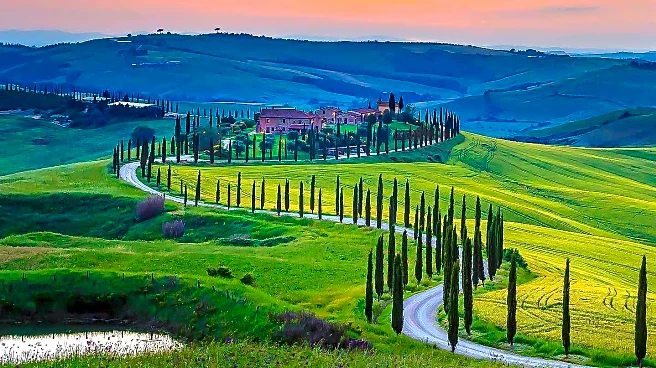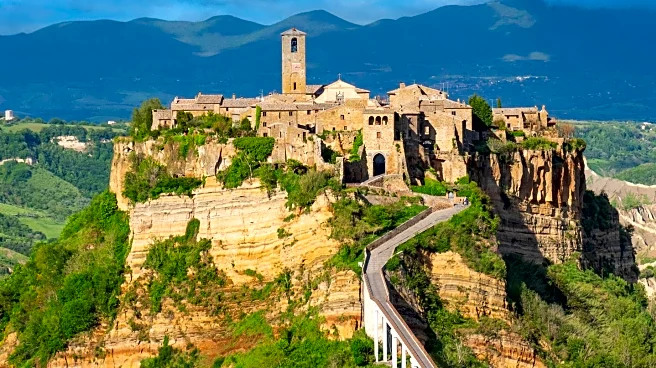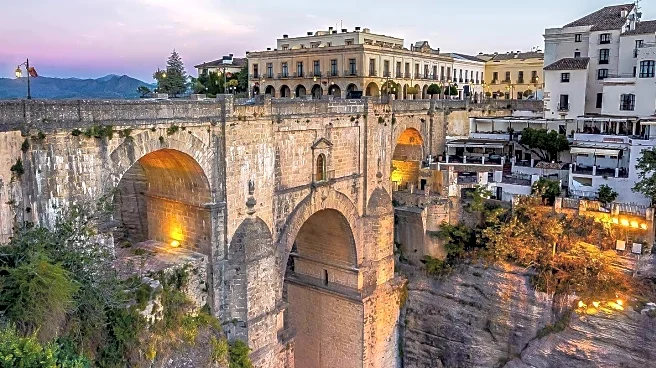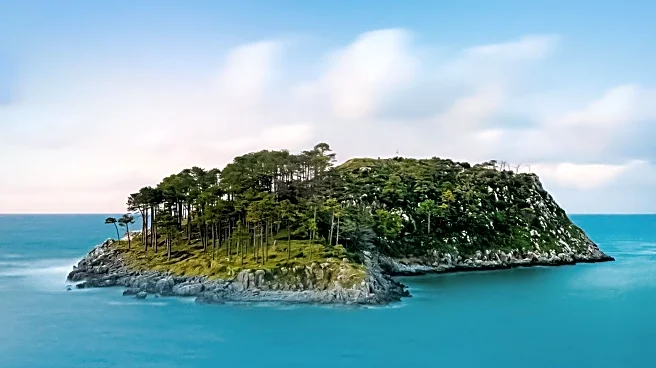What's Happening?
Travel enthusiasts looking to explore Tuscany without the usual tourist crowds can find solace in several lesser-known attractions and experiences. The Garden of La Foce Val d'Orcia, created by Anglo-Italian writer Iris Origo in the 1920s, offers visitors a chance to enjoy one of Italy's most beautiful private gardens, complete with a restaurant, villas, and a bed and breakfast. Wine lovers can visit Capezzana, a rustic winery and olive grove near Florence, which also features a cooking school and wine bar. Another notable destination is Antinori nel Chianti Classico, a sleek architectural masterpiece that combines wine tasting with stunning views from its rooftop restaurant. For those interested in sustainable practices, Salcheto provides a high-tech winery experience and a locavore restaurant overlooking Montepulciano. Additionally, the ancient pilgrimage route of Via Francigena offers a scenic walk through Tuscany, with standout sections around Lucca, Monteriggioni, and the Val d'Orcia.
Why It's Important?
The emphasis on exploring Tuscany's less crowded attractions highlights a growing trend in travel towards sustainable tourism and authentic experiences. By visiting these hidden gems, travelers can enjoy the beauty and culture of Tuscany while minimizing their impact on popular tourist sites. This approach not only benefits the environment but also supports local businesses and communities that may not receive as much attention as more famous destinations. As travelers seek more meaningful and personalized experiences, destinations like Tuscany are adapting by promoting their unique offerings, which can lead to a more balanced distribution of tourism and economic benefits across the region.
What's Next?
As the demand for sustainable and crowd-free travel experiences continues to rise, Tuscany may see an increase in visitors to its lesser-known attractions. Local businesses and tourism boards are likely to further develop and promote these destinations, offering more tailored experiences to meet the needs of discerning travelers. This shift could encourage other regions to follow suit, focusing on sustainable tourism practices and highlighting their unique cultural and natural assets. Additionally, travel companies may expand their offerings to include more off-the-beaten-path itineraries, catering to the growing interest in authentic and environmentally conscious travel.
Beyond the Headlines
The move towards exploring less crowded destinations in Tuscany reflects broader changes in the travel industry, where ethical considerations and cultural preservation are becoming increasingly important. This trend may lead to long-term shifts in how tourism is managed, with a focus on protecting heritage sites and supporting local economies. As travelers become more aware of their impact, they may prioritize destinations that offer genuine cultural exchanges and contribute positively to the communities they visit. This could result in a more sustainable and equitable tourism model, benefiting both travelers and host communities.











